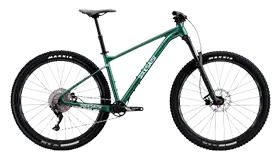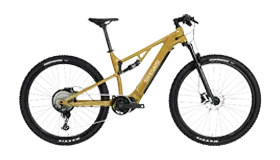Types of Electric Motors for Electric Bikes
Electric bikes have revolutionized the cycling landscape, offering a convenient, eco-friendly, and fun mode of transportation. At the heart of these remarkable machines lies the electric motor, the power source that propels riders forward with effortless pedaling or a simple twist of the throttle. Understanding the different types of electric motors and their unique characteristics is crucial for selecting the right e-bike for your needs.
Hub Motors: The Workhorses of E-Bikes
Hub motors are the most common type of electric bike motor, seamlessly integrated into the front or rear wheel hub. Their simple design and low cost make them a popular choice for entry-level and mid-range e-bikes.
Advantages of Hub Motors:
Low Maintenance: Hub motors require minimal maintenance, making them a hassle-free option for casual riders.
Durable and Reliable: Hub motors are generally robust and can withstand the rigors of everyday use.
Cost-Effective: Hub motors are typically more affordable than other types of electric bike motors.
Disadvantages of Hub Motors:
Unnatural Weight Distribution: Hub motors can add weight to the wheel, affecting the bike's handling and center of gravity.
Limited Climbing Ability: Hub motors may struggle on steep hills, especially when the battery is low.
Less Responsive Pedaling: Hub motors may not provide the most natural pedaling feel, especially when the motor is engaged.
Mid-Drive Motors: The Powerhouses of E-Bikes
Mid-drive motors are positioned near the bike's cranks, directly engaging the drivetrain. This central location provides a more balanced weight distribution and a more natural pedaling sensation.
Advantages of Mid-Drive Motors:
Superior Climbing Ability: Mid-drive motors excel at tackling hills, providing ample power even when the battery is low.
Natural Pedaling Feel: Mid-drive motors offer a more intuitive and responsive pedaling experience.
Better Weight Distribution: Mid-drive motors improve the bike's handling and center of gravity.
Disadvantages of Mid-Drive Motors:
Higher Cost: Mid-drive motors are typically more expensive than hub motors.
Increased Maintenance: Mid-drive motors may require more maintenance due to their integration with the drivetrain.
Compatibility Issues: Mid-drive motors may not be compatible with all bike frames.
Friction Drive Motors: The Retro Charm of E-Bikes
Friction drive motors, also known as roller motors, are a less common type of electric bike motor. They work by pressing a roller against the tire, providing a simple and retro-inspired propulsion method.
Advantages of Friction Drive Motors:
Simple Design: Friction drive motors are easy to install and maintain.
Lightweight and Compact: Friction drive motors are typically lighter and more compact than other types of motors.
Retro Style: Friction drive motors add a unique vintage aesthetic to e-bikes.
Disadvantages of Friction Drive Motors:
Limited Power: Friction drive motors typically have lower power output than hub or mid-drive motors.
Tire Wear: Friction drive motors can cause increased tire wear.
Less Efficient: Friction drive motors may be less efficient than other types of motors.
Choosing the Right Electric Bike Motor
The choice between a hub motor, mid-drive motor, or friction drive motor depends on your individual needs and preferences. Consider factors such as your riding style, budget, and the terrain you'll be riding on.
For casual riders and budget-conscious buyers, hub motors offer a reliable and affordable option.
For avid cyclists and those who frequently tackle hills, mid-drive motors provide superior performance and a more natural riding experience.
For those seeking a retro-inspired e-bike with a unique aesthetic, friction drive motors offer a charming alternative.
Ultimately, the best way to choose the right electric bike motor is to test ride different models and see which one feels best for you. With a wide range of options available, you're sure to find the perfect e-bike motor to power your adventures.










